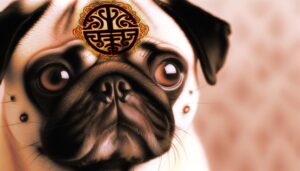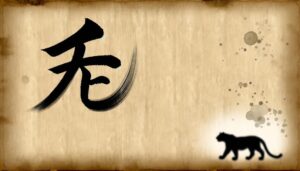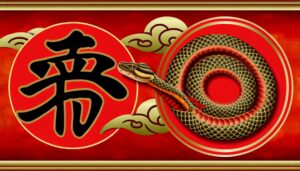How to Draw the Chinese Symbol for Father and Daughter
In Chinese culture, the character for 'father' (父, fù) represents authority and protection, originating from an oracle bone script depicting a hand holding an axe. The 'daughter' character (女, nǚ) symbolizes grace and filial piety, initially portrayed as a kneeling woman.
These characters, standardized during the Qin Dynasty, embody traditional family roles and deep-seated societal principles. Over centuries, their forms and meanings have evolved with linguistic and cultural shifts, yet they continue to signify the mutual respect and affection within familial hierarchies.
To further explore their rich historical roots and modern implications, more insights await.
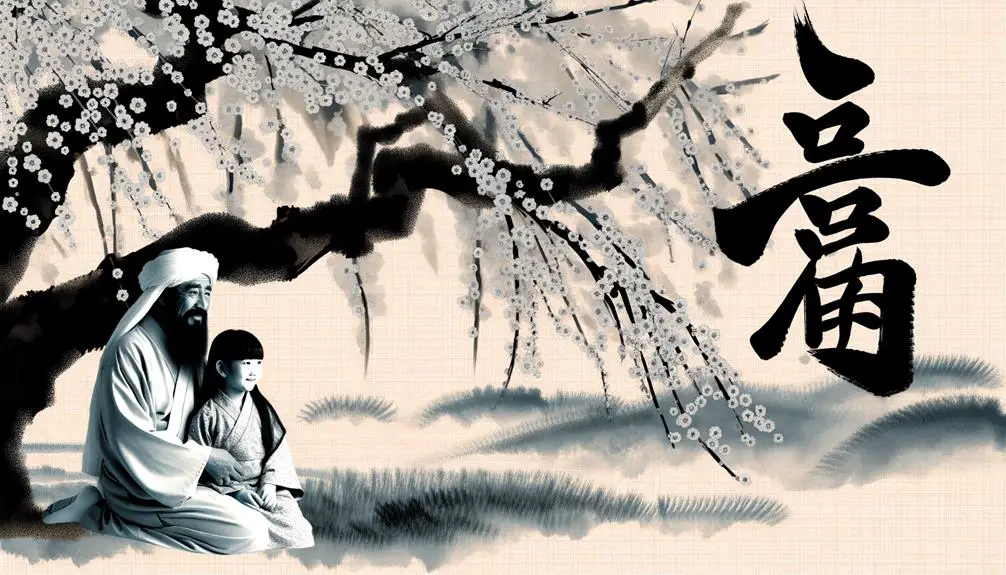
Key Takeaways
- The Chinese character for 'father' is 父, symbolizing authority and protection.
- The Chinese character for 'daughter' is 女, representing grace and filial piety.
- Both characters have evolved from ancient pictographs and were standardized during the Qin dynasty.
- 父 and 女 reflect traditional familial roles and Confucian values in Chinese culture.
- Modern interpretations of these characters include shifting gender roles and influences from global cultural trends.
Historical Origins
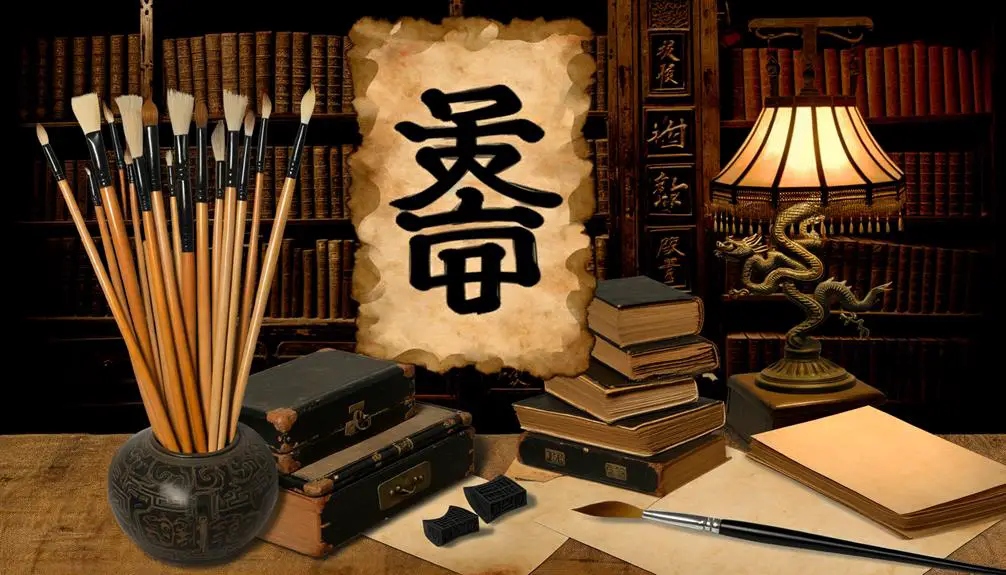
The historical origins of the Chinese symbols for 'father' (父) and 'daughter' (女) trace back to ancient script forms and cultural practices that have shaped familial structures over millennia.
The character 父 evolved from oracle bone script, where it depicted a hand holding an axe, symbolizing authority and patriarchal roles. Conversely, 女 originated in the same script as a pictogram representing a kneeling woman, reflecting ancient societal roles and family hierarchy.
These characters were standardized during the Qin dynasty's script unification, embedding cultural values into the language. This period solidified their forms and meanings, providing a foundational understanding of the familial and societal constructs in ancient China, which continue to influence modern interpretations and familial relationships.
Symbolic Meanings
In examining the symbolic meanings of the Chinese characters for 'father' (父) and 'daughter' (女), one finds that they encapsulate deeply ingrained cultural values and social roles within traditional Chinese society.
The character for 'father' (父) signifies authority, protection, and guidance, reflecting the patriarchal structure historically prevalent in Chinese families.
Conversely, the character for 'daughter' (女) symbolizes grace, filial piety, and potential continuity of the family lineage through marriage. This dichotomy underscores the complementary yet distinct roles expected of fathers and daughters.
In traditional contexts, the father-daughter relationship is imbued with mutual respect and affection, reinforcing familial cohesion. These characters, hence, are not merely linguistic symbols but embody the core societal principles underpinning familial relationships in Chinese culture.
Character Evolution
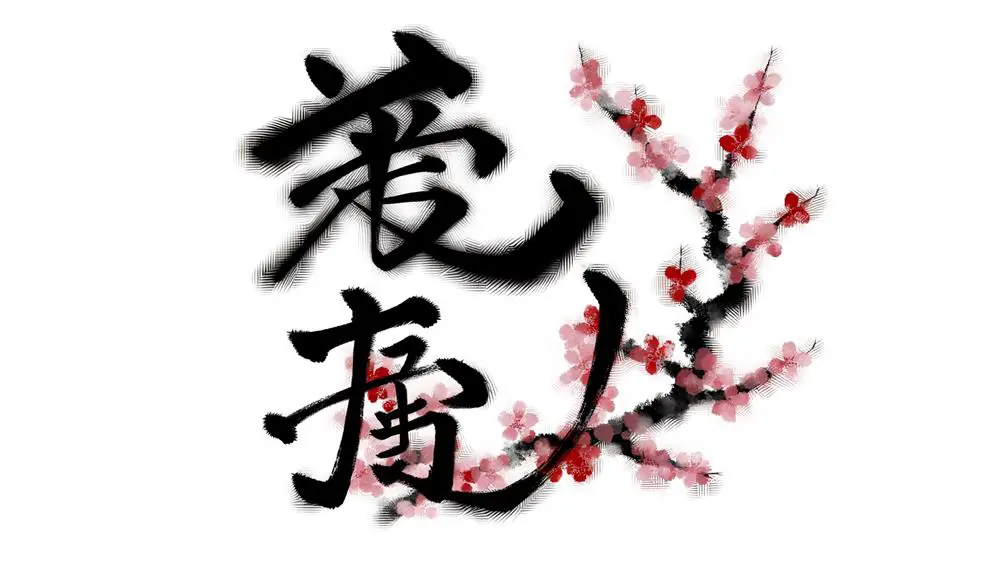
Tracing the evolution of the Chinese characters for 'father' (父) and 'daughter' (女) reveals significant historical, sociocultural, and linguistic developments that have influenced their current forms and meanings.
Historically, these characters have undergone transformations from pictographs to their current logographic forms.
- Early Forms: The character for 'father' (父) originally depicted a hand holding a tool, symbolizing authority and provision. The character for 'daughter' (女) depicted a woman in a kneeling posture, reflecting traditional gender roles.
- Linguistic Shifts: Over centuries, phonetic and semantic shifts altered these characters, adapting to changing spoken language and cultural norms.
- Standardization: The Qin Dynasty's unification of script forms played an essential role in stabilizing the characters, leading to the modern simplified forms used today.
This evolution underscores the dynamic interplay between language and culture.
Cultural Significance
Examining the cultural significance of the Chinese characters for 'father' (父) and 'daughter' (女) reveals deep-seated familial values and social structures embedded within Chinese society.
The character 父 symbolizes authority and protection, reflecting the Confucian ideal of paternal leadership and responsibility within the family unit.
Conversely, 女 not only designates a female offspring but also portrays filial piety and the integral role of daughters within the kinship network. This dichotomy underscores the reciprocal duties and affection expected within traditional family hierarchies.
The characters together encapsulate an enduring respect for familial bonds, emphasizing the father's role as a guide and the daughter's role in maintaining family continuity and harmony. Such values continue to influence contemporary Chinese familial interactions and societal expectations.
Modern Interpretations
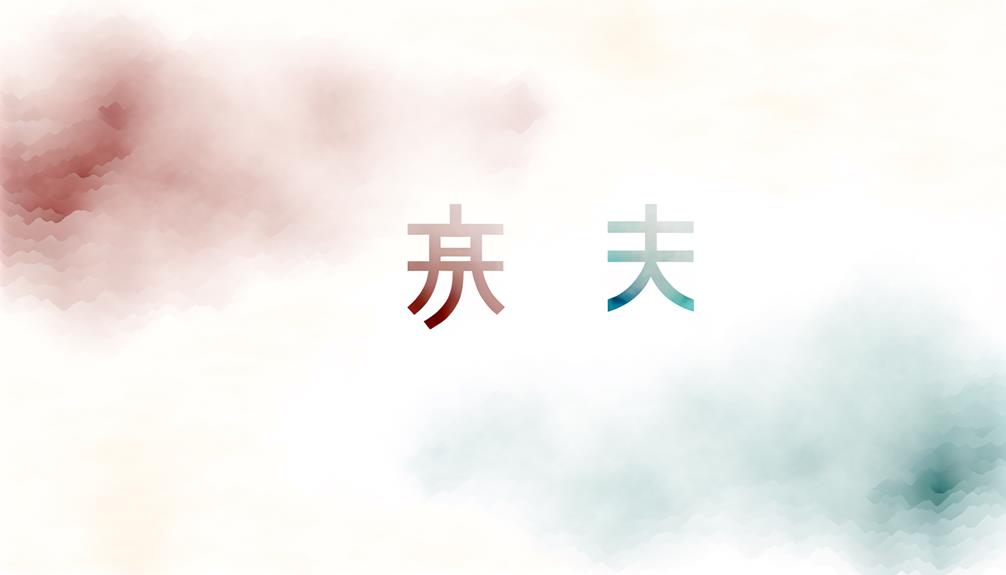
While traditional values around the Chinese characters for 'father' (父) and 'daughter' (女) continue to hold sway, contemporary interpretations increasingly reflect evolving gender roles and the dynamic interplay between modernity and cultural heritage within Chinese families.
Modern perspectives emphasize:
- Gender Equality: The shift towards egalitarian viewpoints has redefined paternal and filial duties, promoting shared responsibilities.
- Cultural Adaptation: Integration of global influences has led to a reinterpretation of familial roles, blending traditional reverence with modern pragmatism.
- Emotional Connectivity: Enhanced communication technologies and evolving societal norms have fostered deeper emotional bonds, transcending generational divides.
These aspects underscore a nuanced understanding of familial relationships in contemporary China, showcasing an intricate balance between preserving cultural identity and embracing progressive ideals.
Conclusion
To sum up, the Chinese symbols for 'father' (父) and 'daughter' (女) encapsulate profound historical, cultural, and linguistic evolution.
These characters, rich in symbolic meanings and deeply embedded in familial structures, reflect the intricate dynamics of Chinese society.
As the adage goes, 'A picture is worth a thousand words,' and these ancient symbols continue to convey complex relationships and cultural values succinctly.
Their modern interpretations further illustrate the enduring legacy of Chinese calligraphy and its nuanced role in contemporary culture.



